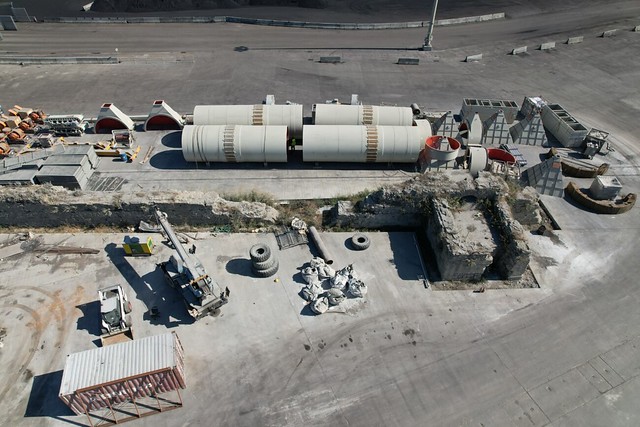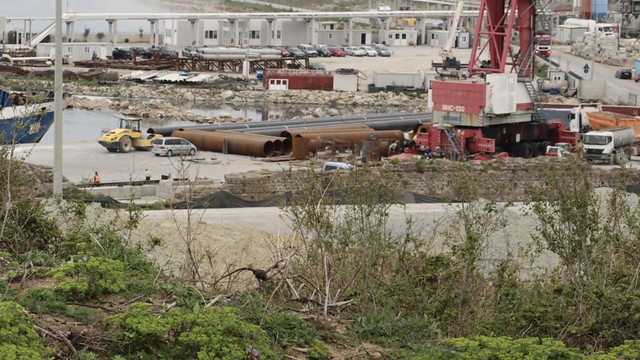Archaeological Site of Muret e Portës, Durrës, ALBANIA
The city of Durrës, on Albania’s Adriatic coast, holds significance in Illyrian, Greek and Roman Antiquity. Known as Epidamnos in Greek and Dyrrachium in Roman times, Durrës is rich in archaeological heritage. Its archaeological site Muret e Portës encompasses a 62-metre linear wall and a tower that date back to Roman times, leading to the ancient port Porto Romano which served as one of the most important trade routes for more than 2000 years, presenting a heritage of European value that spans across the continent.
Seated upon the ancient street of Egnatia, the archaeological site showcases remains from the Archaic, Roman, and Byzantine periods, contributing to the rich historical tapestry of the region. Yet the location is very exposed, in the middle of a loading and unloading dock of the port and close to cranes. Pollution from port activity is another threat, along with difficulty of access.
The archaeological site of Muret e Portës has been under the protection of the Albanian authorities since 1948. The site is under the ownership of the Ministry of Economy, Culture and Innovation of the Republic of Albania. Despite the designated protected status of the area, a construction project aimed at developing a modern port has been underway. Since 2020, extensive damage to the Roman wall has been observed, raising concerns about the preservation of this historically significant site.
According to the research carried out by the archaeologist Apollon Baçe and reported by Amfora Media in December 2023, the “MBM Port” company has destroyed 78 metres of the 140-metre long defensive western wall with machinery. The tower and the 62-metre long eastern wall urgently need to be protected because they are highly endangered by the works.
The Advisory Panel of the 7 Most Endangered Programme stated: “For over 2000 years, Durrës held a strategic position on the trade routes between the Roman west and Greek east, the city was strategically important. Vestiges of these worlds remained dotted throughout the city, and to protect this strategic point, the Romans under the Emperors’ Anastasius and Justinian, built a series of walls and fortifications, of which the Muret e Portës remain to this day (…) The current state of the monument has been described as heavily damaged, with erosion and deterioration from both natural events as well as man-made actions. Residents in the areas have also protested against the expansion of the hydrocarbon port – operating since 2015 – which is threatening their communities.”
The nomination to the 7 Most Endangered Programme 2024 was made by an individual member of Europa Nostra from Albania with the support of the Amfora Centre. The 7 Most Endangered Programme would help heighten awareness among public institutions regarding the significance of preserving the site and attract a larger number of visitors. To uphold the protection zone and perimeter of the archaeological site of Muret e Portës, the goal is to establish an inclusive environment for all civilians. This entails the creation of walking paths, informative signs, proper lighting, and effective site management.



